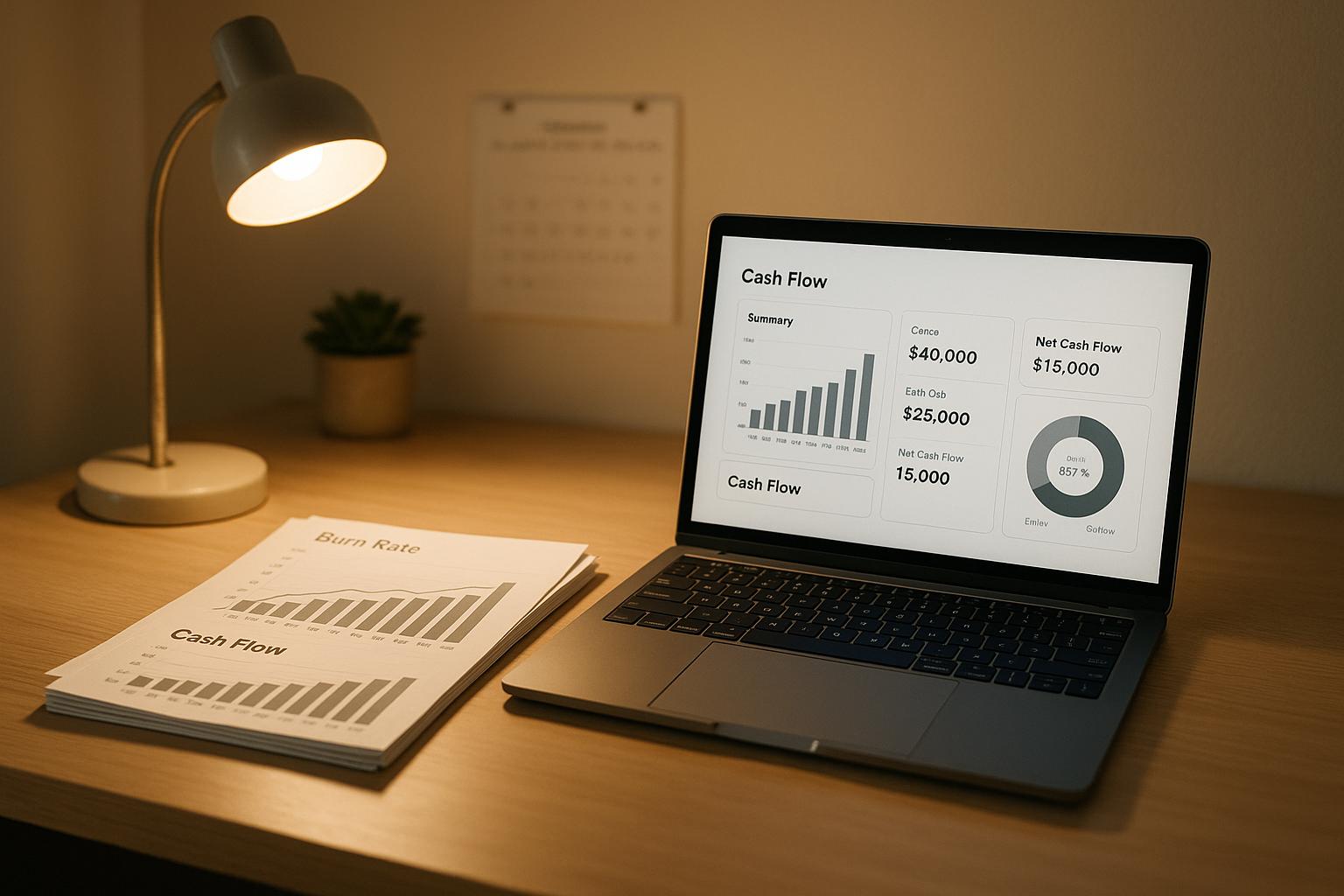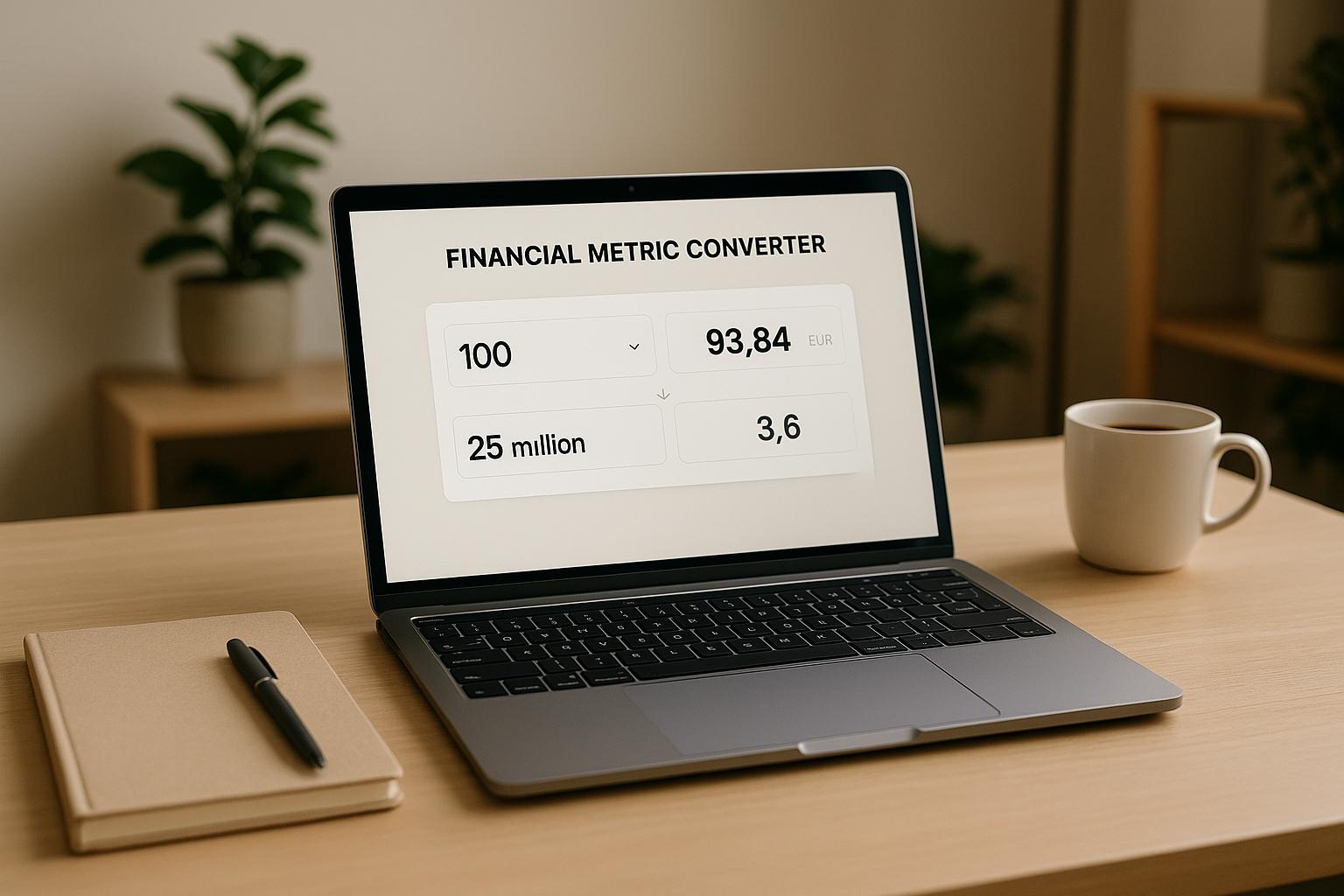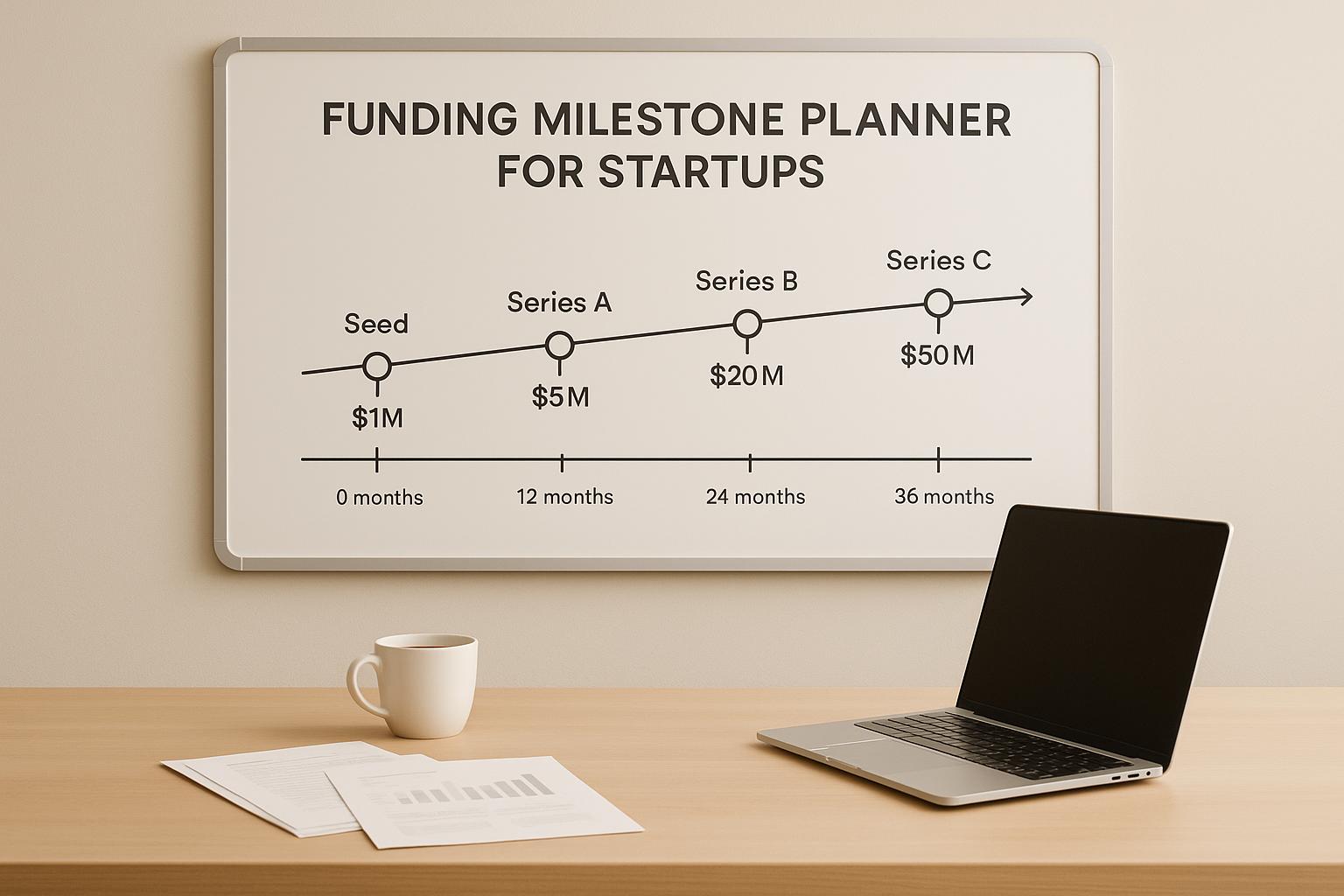CAC Metrics: Pricing Model Benchmarks

Understanding Customer Acquisition Cost (CAC) is critical for ensuring your business grows profitably. CAC tells you how much it costs to acquire a single customer, and optimizing this metric can make or break your financial health. Different pricing models - like subscription, usage-based, tiered, or flat-rate - affect CAC in unique ways, so tailoring your approach is key.
Key Takeaways:
- CAC Definition: Total marketing, sales, and advertising costs divided by new customers acquired.
- Why It Matters: High CAC relative to revenue means your business may not be sustainable.
- Pricing Models Impact CAC:
- Subscription: High upfront CAC, longer payback periods, steady recurring revenue.
- Usage-Based: Lower CAC, quick payback, revenue depends on customer engagement.
- Tiered: Varies by tier; premium tiers cost more but deliver higher returns.
- Flat-Rate: Moderate CAC, steady but limited revenue growth.
- Benchmarks:
- LTV:CAC Ratio: 3:1 for subscription, 5:1 for usage-based.
- Payback Period: 12-18 months for subscription, 6-12 months for usage-based.
Key CAC Metrics for Pricing Model Evaluation
When evaluating your pricing model, focusing on the right metrics is crucial to understanding how well your customer acquisition efforts are performing. These three core metrics provide a clear snapshot of your acquisition efficiency and can guide decisions around pricing adjustments.
Total CAC
Total CAC represents all the costs associated with acquiring new customers over a specific period. This includes expenses like marketing budgets, sales team salaries, advertising costs, and tools used for lead generation. Essentially, it’s the total investment required to bring in new business.
To calculate Total CAC, divide your total acquisition expenses by the number of new customers acquired during that period.
How you interpret this number depends on your pricing model. For instance, a subscription business may find a $250 CAC acceptable if the average customer stays for two years and generates $1,200 in lifetime value. On the other hand, businesses with usage-based models may need to keep CAC closer to $100, as their revenue depends more on customer engagement than predictable recurring payments.
It’s also important to consider how CAC varies across customer segments. For example, enterprise-tier customers might have a higher CAC, such as $800, but they often deliver greater long-term returns compared to basic-tier customers, who might have a CAC of $150. Once you’ve calculated Total CAC, the next step is to evaluate how quickly these costs are recovered using the CAC Payback Period.
CAC Payback Period
The CAC Payback Period measures how long it takes to recover your acquisition costs through the revenue generated by a customer. You calculate this by dividing the Total CAC by the monthly revenue per customer. For example, if your CAC is $300 and each customer generates $50 per month, the payback period is six months.
Different pricing models lead to varying payback expectations. Subscription-based businesses often see payback periods of 12 to 18 months due to predictable recurring revenue. In contrast, usage-based models typically recover costs faster, often within 6 to 12 months, because of lower upfront acquisition costs. Flat-rate models generally fall somewhere in between, depending on pricing and retention rates.
The goal is to ensure your payback period aligns with your company’s cash flow requirements and growth objectives. Once you’ve assessed this, you can focus on profitability using the LTV:CAC Ratio.
LTV:CAC Ratio
The Lifetime Value to CAC (LTV:CAC) ratio shows the long-term profitability of your customer relationships. This metric is calculated by dividing the total revenue a customer is expected to generate over their lifetime by the cost of acquiring them.
A strong LTV:CAC ratio typically falls between 3:1 and 5:1. For subscription models, a 3:1 ratio is often the target due to steady recurring revenue. Usage-based models, however, may aim for 5:1 or higher to account for revenue fluctuations.
This ratio becomes especially useful when evaluating potential pricing changes. For example, if you’re considering shifting from a flat-rate model to tiered pricing, you can use the LTV:CAC ratio to estimate how the change might impact both customer lifetime value and acquisition costs. This helps you predict the financial outcomes before making adjustments.
Industry Benchmarks for CAC by Pricing Model
To make the most of your core metrics, it's helpful to compare them against industry benchmarks. Doing so provides a clearer picture of where you stand and highlights areas that might need improvement.
Note: The benchmarks outlined below are based on common industry trends and estimates. Real-world customer acquisition costs (CAC), LTV:CAC ratios, and payback periods will vary depending on your specific market and industry.
By comparing your CAC metrics to these standards, you can evaluate the effectiveness of your pricing model and identify opportunities to fine-tune your approach.
CAC Benchmarks by Pricing Model
Once you have a solid understanding of your foundational metrics, industry benchmarks can shed light on how different pricing models perform.
- Subscription models: These typically come with higher CAC, especially for companies targeting enterprise clients. Enterprise sales often require more time and resources compared to small business (SMB) sales, which tend to have lower acquisition costs.
- Usage-based models: These are known for lower CAC, as they allow customers to start with minimal commitment. The simplicity of entry often shortens the sales cycle, keeping acquisition costs manageable.
- Tiered pricing models: CAC can vary widely depending on the tier. Acquiring basic-tier customers is usually less expensive, while premium-tier customers may cost more to acquire but offer higher lifetime value (LTV) in return.
- Flat-rate models: These generally maintain moderate CAC levels. The predictable pricing structure and steady revenue streams help balance acquisition costs.
LTV:CAC Ratios and Payback Periods
A commonly accepted LTV:CAC ratio is around 3:1, though this can differ based on the pricing model:
- Subscription models often have ratios in the lower to mid-range, reflecting steady and predictable revenue streams.
- Usage-based models tend to achieve higher ratios. As customers increase their usage, lifetime value grows without a proportional rise in acquisition costs.
- Tiered models fall somewhere in the middle, with premium tiers pushing for higher ratios.
Payback periods also vary. Subscription models often take longer to recover acquisition costs, while usage-based models typically see quicker recovery due to their low-barrier entry. Tiered and flat-rate models tend to fall in between, with recovery timelines depending on customer segments and pricing structures.
CAC Benchmark Comparison Table
| Pricing Model | Typical CAC Characteristics | Common LTV:CAC Targets | Expected Payback Period Characteristics |
|---|---|---|---|
| Subscription | Higher; varies by target (e.g., SMB vs. enterprise) | Low to mid-range (around 3:1) | Longer recovery period |
| Usage-Based | Lower due to easy, low-commitment entry | Often higher as usage grows | Shorter, with quicker recovery |
| Tiered | Wide variation based on tier | Varies; premium tiers aim higher | Moderate; basic tiers recover faster |
| Flat-Rate | Moderate with predictable costs | Consistent, steady targets | Steady recovery over time |
These benchmarks provide a useful snapshot of trends. For example, B2B companies often face higher CAC due to longer sales cycles and more complex decision-making processes. On the other hand, B2C businesses may enjoy lower acquisition costs but face unique challenges in achieving higher lifetime value.
If you're looking for a more tailored analysis of your CAC and pricing strategy, consider working with experts like Phoenix Strategy Group. Their advisory services for growth-stage companies can help refine your metrics and optimize your approach. Learn more at Phoenix Strategy Group.
Keep these benchmarks in mind as you move to the CAC evaluation checklist in the next section.
Checklist for Evaluating CAC Impact of Pricing Models
Now that you’ve got a handle on the benchmarks, it’s time to put that knowledge into action. This checklist will help you evaluate how your pricing model influences customer acquisition costs (CAC) and identify areas where adjustments might be needed. Use the benchmarks discussed earlier as your reference point.
Calculate Your CAC Metrics
Start by gathering all your sales and marketing expenses along with customer acquisition data. To calculate Total CAC, include everything: salaries for sales and marketing teams, ad spend, software tools, content creation costs, and any other acquisition-related expenses. Then, compute key metrics like:
- CAC Payback Period: Divide your Total CAC by the monthly revenue per customer.
- LTV:CAC Ratio: Divide your customer lifetime value (LTV) by your Total CAC.
Break these calculations down further by customer type, channel, and region. For instance, enterprise clients often have higher CAC compared to small businesses, and organic acquisition channels tend to cost less than paid ads. If you offer tiered pricing, calculate CAC for each tier separately - basic-tier customers typically cost less to acquire than premium-tier ones.
Keep a record of your methods and data sources. Many businesses discover gaps in their initial calculations because they overlooked certain costs or used inconsistent timeframes.
Compare Your Metrics to Benchmarks
Once you’ve crunched the numbers, compare them to industry standards. Use the benchmark data provided earlier for subscription, usage-based, tiered, and flat-rate pricing models. For example, if you’re running a subscription model and your LTV:CAC ratio is below 3:1, that’s a red flag that requires attention.
Consider your business model when interpreting results. Usage-based pricing models usually have lower CAC and shorter payback periods because they’re easier for customers to adopt. If you notice high CAC in this model, it could point to issues like a complex onboarding process or an unclear value proposition.
For tiered pricing, evaluate each tier individually. Basic tiers often come with lower CAC and lower LTV, while premium tiers should justify higher acquisition costs with significantly higher LTV. If premium tiers aren’t delivering the expected return, you may need to refine your targeting or adjust the value you offer.
Always factor in your industry and target audience. B2B companies naturally face higher CAC due to longer sales cycles and more complex decision-making, while B2C businesses should focus on achieving enough scale and LTV to maintain profitability.
Identify Performance Issues and Areas for Improvement
Look beyond just the current numbers - analyzing trends in your CAC metrics over time can reveal a lot. For example, if your CAC is climbing without a corresponding increase in LTV, it could signal declining acquisition efficiency. This often happens when you’ve already attracted the easiest-to-reach customer segments and now need to invest in costlier channels.
Compare CAC across acquisition channels. If paid CAC is rising while organic CAC remains stable, it might be time to rethink your budget allocation.
Examine whether your pricing model aligns with customer expectations. High CAC paired with short payback periods might suggest you’re attracting customers who don’t fully grasp or value your offering. On the flip side, low CAC with very long payback periods could mean you’re underpricing or drawing in customers who won’t stick around long enough to be profitable.
Pinpoint bottlenecks in your acquisition process. For instance, if many prospects drop off during free trials or demos, it’s worth revisiting your onboarding experience.
Finally, consider how these findings relate to your pricing structure. Adjust your strategies for segments or channels with disproportionately high CAC to improve overall efficiency.
sbb-itb-e766981
How to Optimize CAC for Subscription-Based Pricing Models
One of the most effective ways to lower subscription CAC is by focusing on customer retention. Keeping current customers costs far less than bringing in new ones, so putting energy into early retention efforts can make a big difference. Beyond that, there are specific strategies to fine-tune your subscription-based CAC metrics.
Subscription Model Optimization
Using key benchmarks as a guide, you can adopt strategies designed to boost customer value while cutting CAC. For example, a strong onboarding process can deliver value quickly and help reduce early churn, setting the stage for long-term customer relationships. Offering pricing incentives, such as discounts on annual subscriptions, not only encourages commitment but also spreads acquisition costs over a longer revenue period, improving your overall unit economics. Additionally, refining free trials to remove friction and guide users toward essential features can make a big impact on conversions and retention.
Key Takeaways on CAC Metrics and Pricing Models
Keeping a close eye on Customer Acquisition Cost (CAC) metrics is crucial for sustainable growth. One of the most important points is that different pricing models require specific approaches to optimize CAC. Strong unit economics hinge on achieving the right Lifetime Value to CAC (LTV:CAC) ratios and payback periods tailored to your business model.
In general, a healthy LTV:CAC ratio and a short payback period are good signs of solid unit economics. However, these benchmarks can vary widely depending on your industry and target customer base.
It's also important to consistently evaluate and refine your CAC metrics as market dynamics shift. As your business grows, you may find that the pricing model that worked for your initial customers no longer serves a larger, more diverse audience effectively. Adapting to these changes is key to maintaining efficiency.
Another challenge lies in accurately calculating and interpreting CAC metrics. Growth-stage companies often struggle to align their pricing strategies with acquisition costs, which can lead to missed opportunities for improving unit economics. This is where expert financial advice can make a real difference, helping businesses not just grow faster but grow smarter.
Phoenix Strategy Group offers specialized guidance for growth-stage companies, helping them fine-tune CAC metrics and align pricing strategies. This kind of strategic support highlights why a thoughtful approach to CAC metrics is so important for long-term success.
FAQs
How can I tell if my pricing model is driving up my Customer Acquisition Cost (CAC)?
To determine whether your pricing model is driving up your customer acquisition cost (CAC), take a close look at how it affects key metrics like sales cycle length, conversion rates, and marketing efficiency. For example, if your prices are on the higher side, it could result in longer sales cycles. Similarly, unclear or poorly aligned pricing might hurt conversion rates and push your costs higher.
Keep an eye on these metrics regularly and tweak your pricing as needed to find the right balance between delivering value to your customers and maintaining acquisition efficiency. Even small changes can help cut unnecessary costs and ensure your pricing model supports steady, sustainable growth.
How can subscription-based businesses improve their LTV:CAC ratio?
To get the most out of your LTV:CAC ratio in a subscription-based business, the focus should be on two key areas: increasing the lifetime value (LTV) of your customers and keeping customer acquisition costs (CAC) in check.
Start by improving retention and encouraging customers to spend more. How? Offer flexible subscription options that cater to different needs, create personalized experiences that make customers feel valued, and introduce loyalty programs to keep them engaged and coming back.
On the flip side, reducing CAC is just as important. You can do this by running highly targeted marketing campaigns, refining your pricing strategies, and ensuring top-notch customer support. These efforts not only help attract new customers but also make it easier to retain them.
By balancing these strategies, you can grow your business more effectively - boosting revenue from your existing customers while keeping acquisition expenses manageable.
How do CAC benchmarks differ between B2B and B2C businesses, and what factors should I consider when comparing them?
The Customer Acquisition Cost (CAC) can differ greatly between B2B and B2C businesses, primarily because of variations in how they approach sales and how their customers make decisions.
For B2B companies, CAC tends to be higher. Why? Longer sales cycles, multiple stakeholders involved in decision-making, and more intricate sales strategies all contribute to the increased cost. In contrast, B2C businesses usually face shorter sales cycles and simpler customer journeys, which often result in lower CAC.
When evaluating CAC benchmarks, it's crucial to factor in specifics like:
- Sales cycle length: Longer cycles typically mean higher costs.
- Decision-making complexity: More stakeholders can drive up expenses.
- Customer Lifetime Value (LTV): A higher LTV may justify a higher CAC.
- Industry-specific costs: Different industries come with their own unique acquisition expenses.
By considering these factors, you can ensure your comparisons are relevant and aligned with your business model and objectives.




